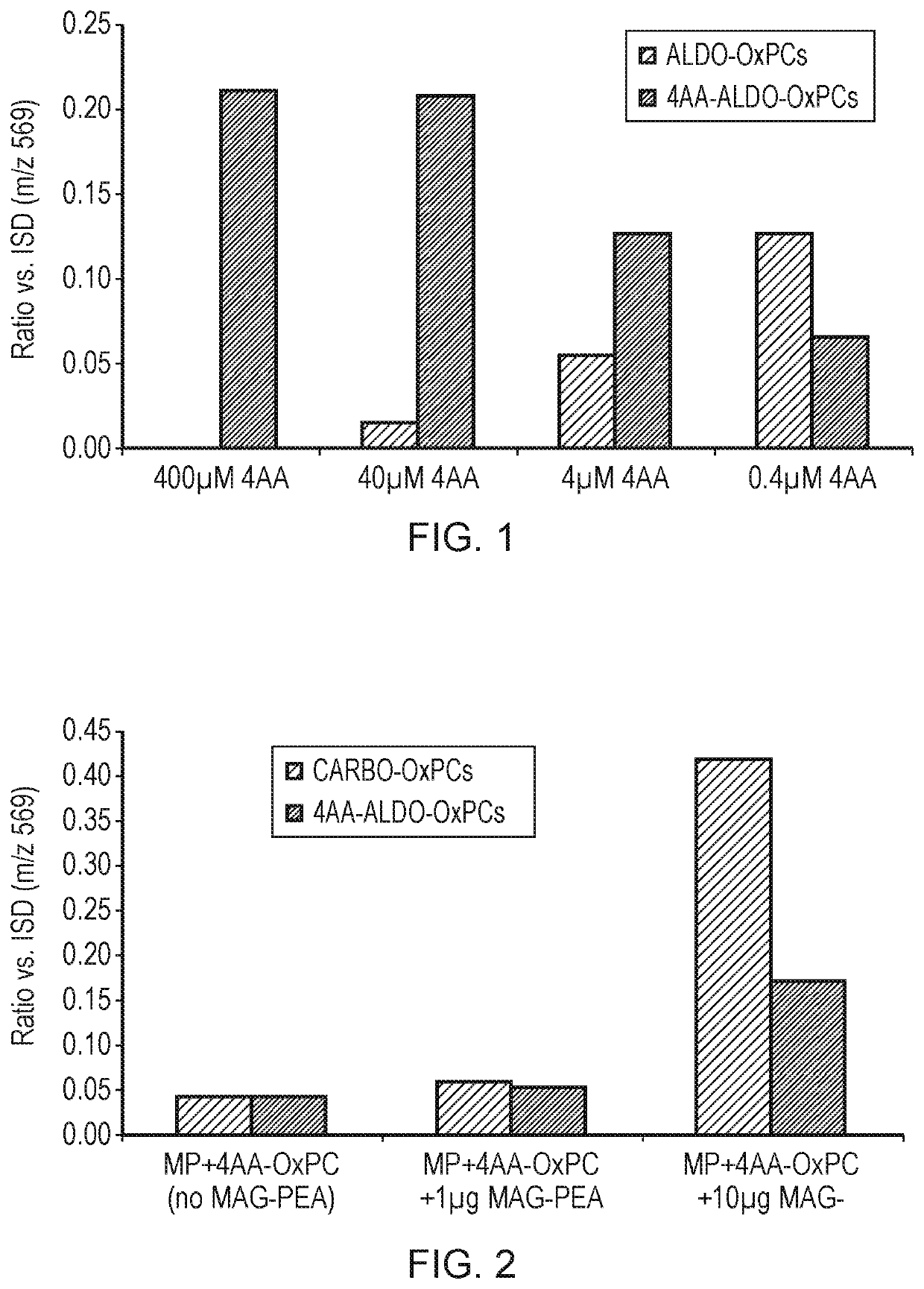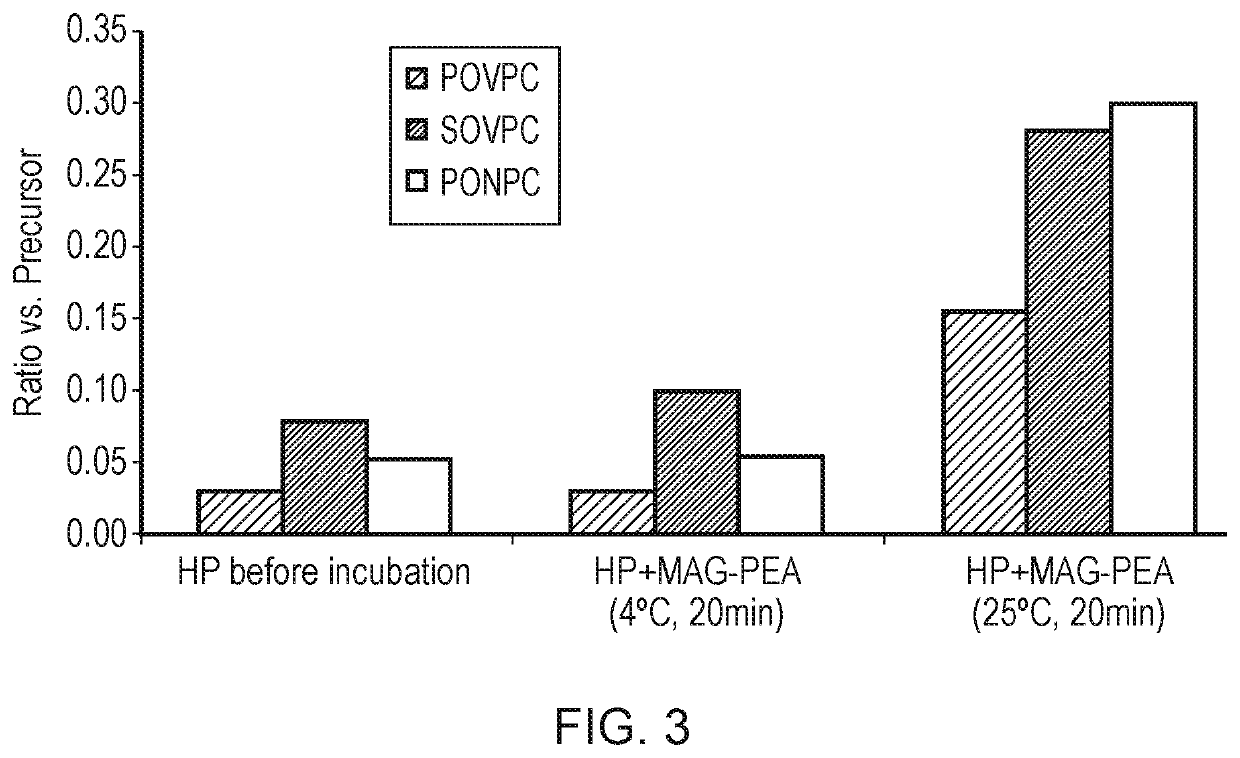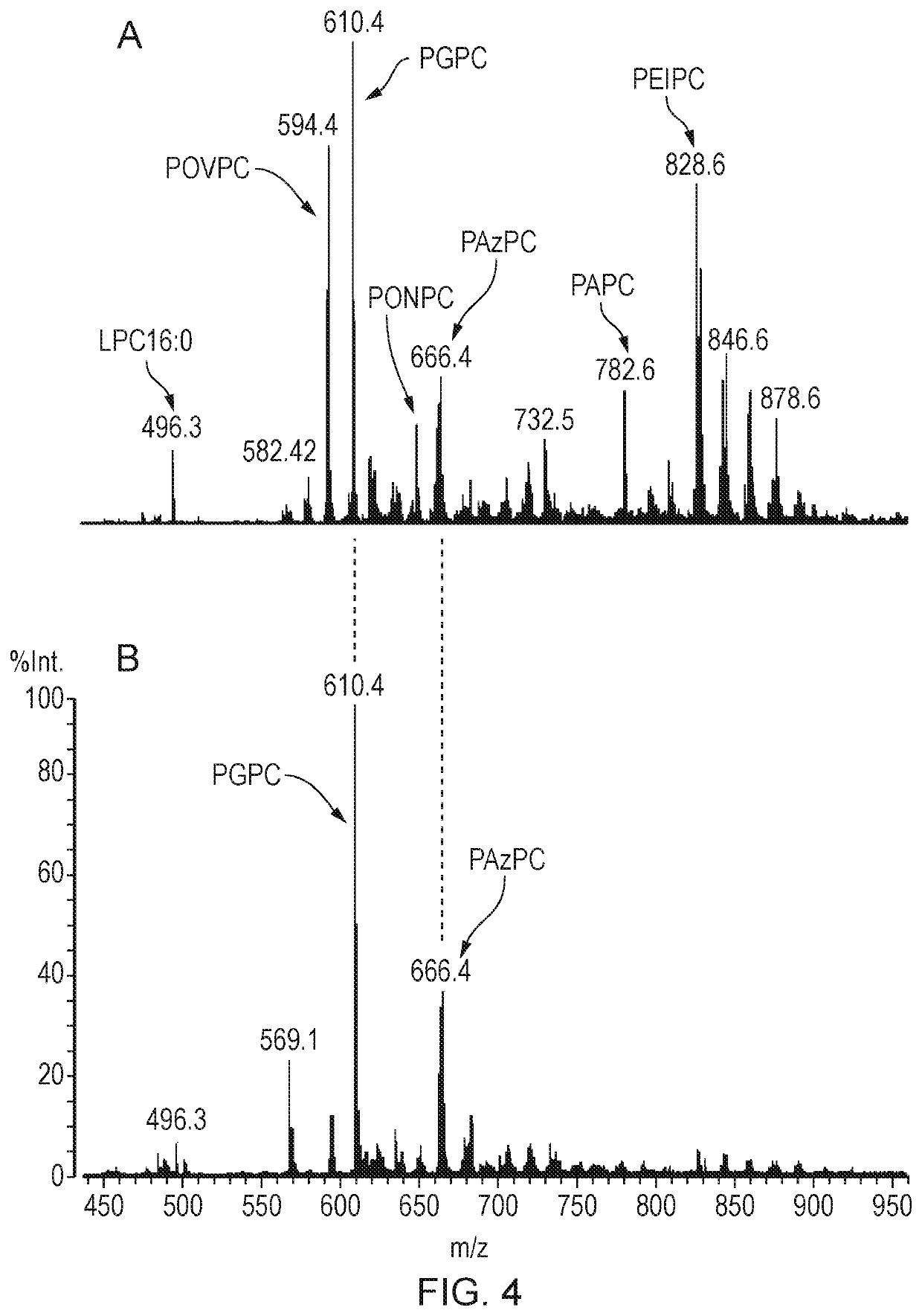Oxidized lipid detection
- Summary
- Abstract
- Description
- Claims
- Application Information
AI Technical Summary
Benefits of technology
Problems solved by technology
Method used
Image
Examples
examples
Methodology
Lipids
[0174]The lipids used in the experiments detailed below are listed in table 1.
Oxidation of Native PLs Containing Esterified PUFAs
[0175]Mixtures of short- and long-chain OxPLs (e.g. OxPAPC) derived from oxidation of the sn-2 PUFA residues of native PLs (e.g. PAPC) were obtained by auto-oxidation of completely dried samples at room temperature (25° C.) over night.
[0176]The samples were then re-suspended in chloroform and stored under argon at −80° C. until ESI-MS or MALDI-MS analysis.
Isolation and Modification of Human Low-Density Lipoprotein
[0177]Immediately after venipuncture blood was supplemented with EDTA (1 mM) and BHT (20 μM). Native LDL (n-LDL) was isolated from 3 mL human plasma by preparative ultracentrifugation (Sorvall ETD, SW-41 swing out rotor, 41000 rpm, 10° C., 24 h) using a discontinuous KBr density gradient.
[0178]For preparation of oxidized LDL (OxLDL) the EDTA-stabilized samples (0.25 mg / ml protein) were extensively dialyzed in the cold against PBS ...
PUM
 Login to View More
Login to View More Abstract
Description
Claims
Application Information
 Login to View More
Login to View More - R&D
- Intellectual Property
- Life Sciences
- Materials
- Tech Scout
- Unparalleled Data Quality
- Higher Quality Content
- 60% Fewer Hallucinations
Browse by: Latest US Patents, China's latest patents, Technical Efficacy Thesaurus, Application Domain, Technology Topic, Popular Technical Reports.
© 2025 PatSnap. All rights reserved.Legal|Privacy policy|Modern Slavery Act Transparency Statement|Sitemap|About US| Contact US: help@patsnap.com



